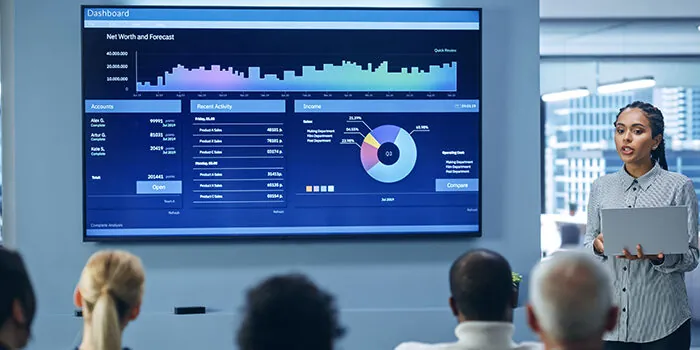Cutting Costs without Compromising Employee Experience in Mobile Device Management
Although cutting costs and exceptional employee experience often don’t go hand in hand, RevGen created an approach to mobile device usage that prioritized them both.

We helped a Fortune 500 telecom client improve their data and analytics capabilities by enhancing and streamlining their Tableau environment in preparation for a migration to the cloud.

A national telecom company had concerns about the scalability of their Tableau visualization architecture due to anticipated future growth, changing user needs, and migration to a cloud-based data platform. RevGen completed an initial assessment that identified short, medium, and long-term actions that would advance the client along their path to an optimized future state. We then began implementing the changes, starting with a variety of short-term enhancements.
In advance of a migration to the cloud, RevGen sought to streamline and enhance the current Tableau reporting objects (workbooks, extracts, and dashboard visualizations) by implementing various Tableau best practices.
The reporting environment included reports that varied in their usage patterns — including the number of users, frequency of times accessed, and time since last accessed.
Owing to different authors and limited governance, the various reports included inefficient visualizations. Views included multiple unnecessary data elements, overly large transaction tables, and limited navigation controls. These factors combined make for inefficient and difficult-to-navigate dashboards and visualizations.
The reporting environment made inconsistent and inefficient use of data extracts, leading to higher demands on server resources. While some common workbooks made use of data extracts, others did not. We also discovered even more workbooks which utilized full data refreshes.
RevGen took a collaborative approach in evaluating usage patterns of all workbooks, flagged low-usage candidates for review by stakeholders. Once agreement was reached, flagged dashboards were archived based on the usage criteria (including small number of users, low frequency of usage, and elapsed time since last use). The remaining dashboards were copied into a development environment where the enhancements would be made.
[Read More: Driving Adoption of Tableau and Amazon Web Services]
Our enhancements reduced overall server demands and made the remaining dashboards more efficient and user friendly.
Archiving underused dashboards served to free up server resources by reducing workbook footprints and data refresh demands.
Additional relief was gained by altering workbooks to make better use of data extracts. The extracts were changed from full to partial data refreshes wherein only new data is updated versus all records. Any workbooks with live connections were also changed to use data extracts, running on a periodic refresh schedule.
RevGen modified various dashboard views to make use of context filters where appropriate, allowing for faster results within views. This enhancement was applied on a case-by-case basis after understanding the purpose behind the individual views.
Dashboards were further enhanced to address large transaction tables within dashboards. The modifications effectively truncated the tables to a predefined number of rows — no longer requiring full data tables to load. Additionally, page controls were added to make navigating data within the tables simple and quick; users can adjust the number of rows to display, and flip between pages.
Our initial evaluation laid out a roadmap for enhancing the Tableau reporting environment in anticipation of migration to the cloud. RevGen worked with stakeholders to quickly identify and understand usage patterns, enhance dashboards where appropriate, and archive certain dashboards in other cases. Enhancements to the data sources served to create a more streamlined and lighter overall footprint on the Tableau server, while enhancements to the dashboards themselves allowed for an improved user experience — with faster visualizations load times and easier navigation.
Back-end enhancements focused on efficient use of data extracts to refresh a subset of data at scheduled intervals and removing unused data columns from the extracts added to the improved efficiency in data refreshes.
Front-end changes made to the workbooks resulted in cleaner workbooks with faster load (and thus response times) times for users. This was accomplished by implementing best practices around the use of data filtering, transactional tables, and page controls. Improved user experience will directly encourage dashboard usage by the organization.

Although cutting costs and exceptional employee experience often don’t go hand in hand, RevGen created an approach to mobile device usage that prioritized them both.

RevGen helped this government agency break down silos and accelerate AI opportunities through strategic collaboration

RevGen helped our client turn blue-sky ideas into a realistic, sequenced AI roadmap
Get the latest updates and Insights from RevGen delivered straight to your inbox.